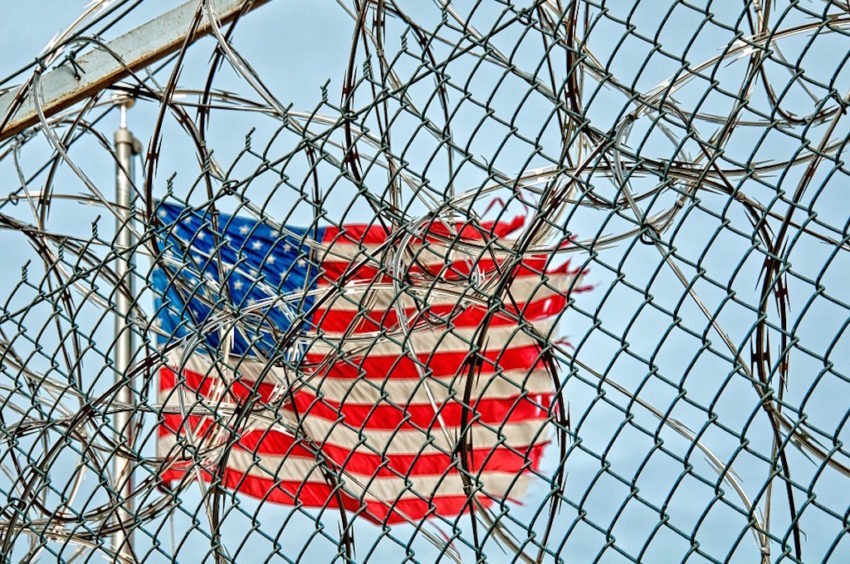1600 immigrants sent to federal prison
June 9, 2018 | Expert Insights

According to recent reports, US Immigration and Customs Enforcement will be moving 1,600 immigration detainees into federal prisons due to a shortage of detention space.
Border forces have arrested up to 50,000 undocumented immigrants per month under the Trump administration’s “zero tolerance” immigration policy.
Background
Since 1975, the United States has assisted in the resettlement of more than 3 million refugees. Illegal immigration was a signature issue of U.S. President Donald Trump's presidential campaign, and has continued to play a big role in his policies. He has repeatedly blamed immigrants for multiple problems within America. During his campaign he had stated that many of the immigrants who come in from Mexico were “rapists” -a comment he was widely criticized for. He also proposed to build a big wall along the US-Mexico border to prevent illegal immigration. He said that Mexico would pay for this structure – a claim that has been denied by the Mexican government.
President Trump has expressed support for a variety of "limits on legal immigration and guest-worker visas” including a "pause" on granting green cards, which Trump says will "allow record immigration levels to subside to more moderate historical averages.” Trump's proposals regarding H-1B visas frequently changed throughout his presidential campaign, but as of late July 2016, he appeared to oppose the H-1B visa program. He has also questioned official estimates of the number of undocumented immigrants in the United States (between 11 and 12 million), insisting the number is much higher (between 30 and 34 million).
After being sworn in, the US President initiated a travel ban, on entrants from a number of Muslim-majority countries. Colloquially called the “Muslim ban”, this order was met with widespread protests. The Deferred Action for Childhood Arrivals (DACA) was an American immigration policy that allowed some individuals who entered the country as minors, and had either entered or remained in the country illegally, to receive a renewable two-year period of deferred action from deportation and to be eligible for a work permit. The Trump administration rescinded this policy in 2017.
On May 7th, Attorney General Jeff Sessions announced a “zero tolerance” policy for immigration, noting that the US would begin prosecuting every person crossing the border illegally, and that parents who brought their children with them could be separated. According to an Arizonian nonprofit, 200 children in the state have been separated from their parents since the beginning of 2018.
Analysis
“Due to the current surge in illegal border crossings and implementation of the U.S. Department of Justice’s zero-tolerance policy, the U.S. Immigration and Customs Enforcement is working to meet the demand for additional immigration detention space,” spokeswoman Danielle Bennett said in a recent statement. Up to 1,600 detainees will be moved to federal prisons. The ICE has noted that the arrangement is temporary, until more detention facilities can be arranged, or until illegal crossings reduce.
However, reports have noted that the population of detainees has increased since 2017. ICE data shows the approximate arrests made by US border forces was 52,000 in May 2018, almost three times the number from May 2017. “US Immigration and Customs Enforcement is working to meet the demand for additional immigration detention space, both long and short term,” the ICE said.
Commentators have observed that the overflow of detention agencies is likely a result of Trump’s “zero tolerance” policy, which also requires immigrants to stay locked up “pending the outcome of their removal proceedings.” Previous policies followed a “catch and release” method, which either allowed them to stay in the US while they were awaiting civil hearings, or housed detainees in ICE detention facilities and county jails.
Civil rights groups have argued that immigration is a civil process and detainees shouldn’t be grouped with criminals. “Our federal prisons are set up to detain the worst of the worst. They should not be used for immigration purposes,” said Ali Noorani, executive director of the National Immigration Forum. “Federal prisons are for hardened criminals. They are not physically set up for immigrant landscapers looking for a job or fleeing violence.” Michael Kaufman from American Civil Liberties Union of Southern California said that the new policy is punishing people for “lawfully going through the immigration process… even if there isn’t a reason to do so.”
“A large percent of ICE detainees have no criminal record and are more vulnerable in a prison setting – security staff and administrators at BOP facilities have spent their careers dealing with hardened criminals serving long sentences for serious felonies, and the procedures and staff training reflect that,” said Kevin Landy, former ICE official from the Office of Detention Policy and Planning under the previous administration. “This sudden mass transfer could result in some serious problems.” Prison union leaders in California, Texas, and Washington State told Reuters news that they had insufficient time to prepare, and there were concerns about staffing and safety.
US federal prisons are already under stress. According to the US Bureau of Justice Statistics, 2,220,300 adults were incarcerated in US federal and state prisons, and county jails in 2013, the equivalent of approximately 0.91% of resident US adults. Incarceration rates had decreased substantially in the past four years. The decrease was partly due to Obama-era changes to drug crime prosecution and sentencing, as well has clemency grants by the former President. Attorney General Sessions has now reversed the Obama-era low-level drug crime policy, which could potentially end the declining incarceration rate trend.
Assessment
Our assessment is that such stringent immigration policy may not be sustainable in the long term. While the US incarceration rate has decreased in recent years, it still remains one of the highest in the world. This strategy could put pressure on federal prisons if continued. As stated previously, we believe that the current administration’s position on immigration may have some adverse consequences. Strict immigration policies adversely affect aspirants from countries such as India as well.








Comments